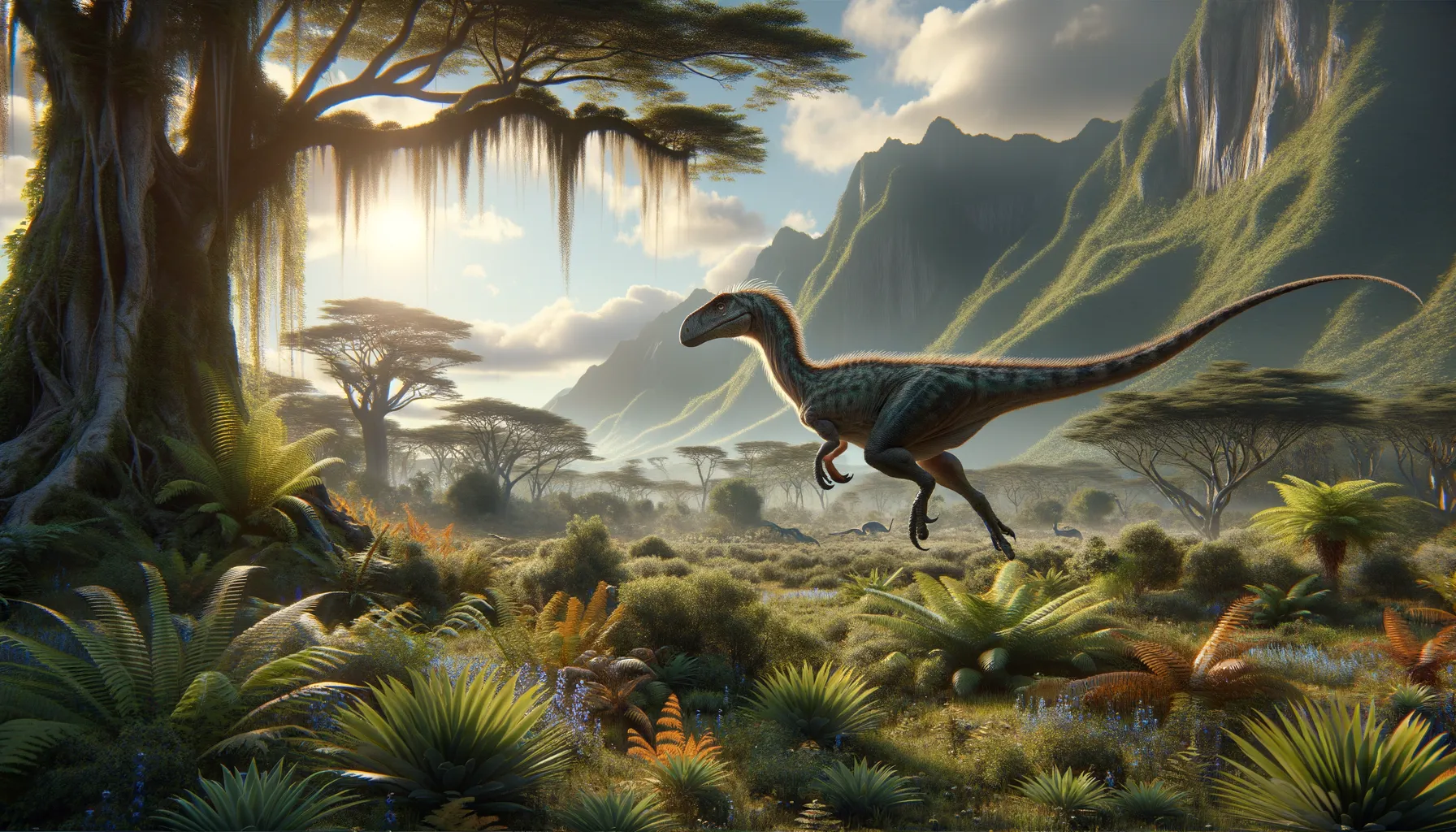
Timimus
Agility defined paleontological evolution.
Period
Cretaceous
Length
About 2.5 meters long.
Height
Roughly 1 meter tall.
Weight
Approximately 30 kilograms.
Timimus was a small theropod dinosaur that lived during the Early Cretaceous period. Known from fossil remains found in Australia, it showcased agility and possibly preyed on small animals. Though limited in fossil evidence, Timimus helps paint a picture of the diverse ecosystem of ancient Australia, giving insight into the life of theropods in Gondwana. Its discovery adds to the understanding of dinosaur evolution in regions outside of the traditionally fossil-rich areas.
Diet
Timimus was likely an omnivore, subsisting on a mixture of small animals and plant matter. Its sharp teeth suggest a capability for catching small prey, while its environment would have provided various dietary options.
Hunting
Being potentially quick and agile, Timimus may have pursued smaller, fast-moving prey. Its possible group behavior could have influenced its hunting strategies, making it effective in tracking and capturing prey.
Environmental challenges
Timimus faced the challenges of seasonal climate variations, which could affect food availability. It had to adapt to living in a region that was part of the ancient supercontinent Gondwana, where land connections to other parts of the world influenced its ecosystem. Predators and competition for resources would have been ongoing challenges for survival.
Speed
Estimated to be moderately fast, capable of quick sprints.
Lifespan
Likely 10 to 20 years.
First discovery
Discovered in 1994 in southeastern Australia.
Fun Facts
- Timimus means 'Tim's mimic,' named after paleontologist Timothy Flannery who discovered it.
- This dinosaur lived during the early Cretaceous period, over 100 million years ago.
- Timimus was a small, fast-moving theropod dinosaur, similar in shape to modern-day birds.
- Fossils of Timimus have been found in Australia, suggesting it lived in environments that were once part of Gondwana.
- Timimus is believed to have been an omnivore, eating both plants and small animals.
- One of its distinctive features was its long legs, which suggests it was a swift runner.
- Timimus is a relatively rare find, with only a few fossils discovered so far.
Growth and Development
Timimus likely experienced rapid growth in its early years to avoid predation. Growth rates may have adjusted based on environmental pressures and food supply. Its development pattern helps scientists understand implications for juvenile survival strategies in small theropods.
Habitat
Timimus lived in a predominantly wooded environment with a variety of plants and small animal life. Seasonal changes in the landscape would have required adaptability in finding food and shelter. Its region was likely characterized by a mix of wet and dry periods influencing the ecosystem's diversity.
Interaction with other species
Timimus coexisted with other dinosaurs and prehistoric plants, forming a complex ecosystem. It may have interacted with larger herbivores and carnivores, affecting its behavior and adaptations. Social behaviors could have impacted its interactions, from competition to cooperative survival strategies.
Natural lifespan
Timimus likely had a natural lifespan ranging from 10 to 20 years.
Reproduction
Timimus likely reproduced through laying eggs, similar to other theropods. Nesting behaviors might have included selecting protected sites for laying eggs. Parental care in theropods is debated, but some level of nest protection or site selection is possible.
Social behaviour
Timimus may have shown some group behaviors, which could help in foraging and protection against predators. Social structures among theropods can vary, but small groups are a possibility. Such behaviors could influence survival rates and reproductive success.
Fossil locations
Fossils of Timimus have been located in the Dinosaur Cove region of Victoria, Australia. These sites have provided valuable insights into the Cretaceous environment of southern Gondwana. Fossil evidence remains limited, but ongoing research could uncover more details.
